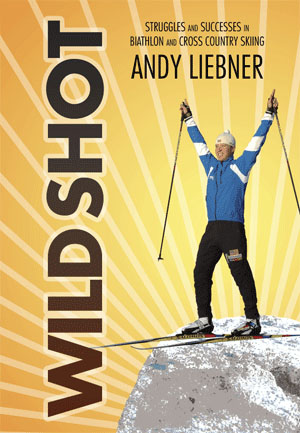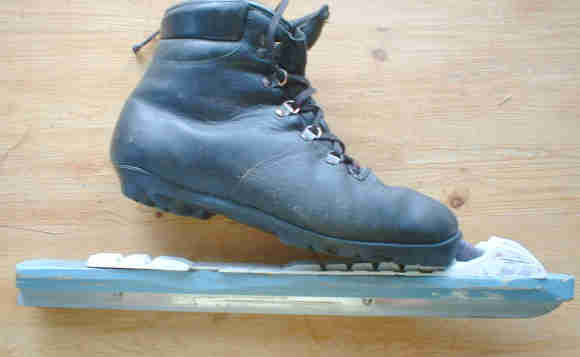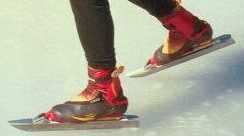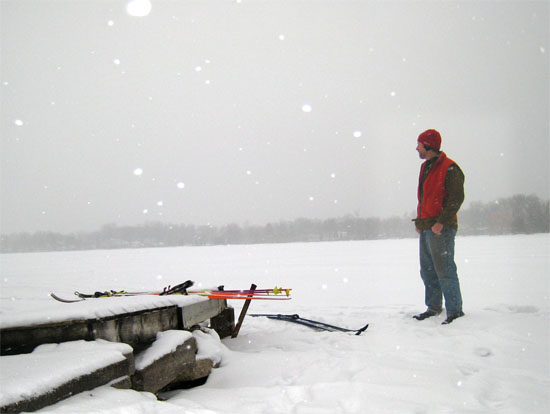OK, there’s skiing a marathon, there’s racing one, then there’s just seeing if you can do it. They take different approaches.
I’ll start with the simplest approach. This is where you don’t have that much time but want to see if you can ski 31 miles, 50km, a typical marathon.
I screwed up about 6 times before I finally figured out how to do it right, then had good events after that. I’ve had several friends do their first marathons on minimal training using my tips and they said it all worked fine.
Oh, and the reason why you want to do a marathon right if you start one is that at whatever point it starts going wrong you’ll be in the worst misery you can imagine. If you fall apart even just a couple miles from the end you’ll wish you hadn’t started. It can be pretty bad.
There seem to be two kinds of disaster. First, the infamous dread BONK (or energy depletion) where you’re feeling great one minute then the next finds you standing like a zombie or wanting to nap in the trail and which wrecks you for the following several hours no matter what you do. Then there’s the Muscle-Kaput, where you’re not able to exert in the needed range of motion anymore—as happens after a few steep hills when you’re nicely trained for moderate hills: the change in angle of exertion alone is enough to make the limbs call it quits: wonderful tearing pain feebleness feelings ensue.
So here are the basics for doing it right and finishing with a smile. If you cover them, you can finish in reasonable shape:
*Make sure you’re lean. Weight is the most important thing. If you’re overweight in terms of your fighting weight, you’ll suffer. Give yourself the biggest break possible and get down to fighting trim. You should look fair in a lycra suit. Do that and you’re almost a shoe-in already.
*Get in a few several-hour hikes or workouts in the fall and winter leading up to the marathon. They don’t have to be quite as long as you might spend doing the event, but they should be close. These outings shouldn’t waste you: if you feel fine after hiking a few hours straight in the fall, you’re on the right path. If you actually rollerski or pole-hike for as long as you expect to take to do the event, well, you’re a shoe-in. All you have to worry about then is if the event has bigger hills than you’ve been in in your jaunts.
*Get in several one-hour workouts in the most extreme terrain the event will throw at you. If the marathon has even a few short steep hills you better spend a few hours skiing or pole-hiking in hills that are just as steep in the month prior. The different slope-grades use VERY different muscle groups to climb them.
*OK, start your race. You’re ready. : )
*Now that you’re under way in your event never use your “pedal.” Just cruise. No “trying.” Back WAY off on every hill. No strain. Be a granny. Of course, optimize your glide. Don’t lollygag and be out there forever. Time and effort are both your enemies here. Glide and relax—that’s the exact ticket.
*Ideally, bring nothing with you. Weight is worst! But if there’s a chance the event doesn’t have sufficient feedstops or ones suitable for you, bring food and water and wax as need be. Anyway, stop at EVERY feedstop and eat and drink twice as much as you want to. If you want to drink a cup of water, drink two. If you want an orange slice, have two. Basically, pound the Gu and the cookies whenever you can. Downhill glides are good places. But stop and eat and drink at every feedstop. Don’t skip any because you’re feeling so good. Disaster! Heck, you’ll be wanting about 6-8 such stops in total.
And that’s it! That’s a good way to get thru your first ski marathon without bonking or falling apart too badly.
Now, to race a marathon, well, you should be working out every day with some several-hour outings thrown in in the last couple months. You should be rollerskiing at all speed ranges and in all terrain since late summer. You should be weightlifting twice a week, even just a little. You should make sure you have good wax and proper skis to match the event. You should have done several marathons previously at slower speeds and finished with plenty in the tank. And even then you should in your first race-pace marathons focus mostly on relaxing, gliding and not using “pedal.” And no gut allowed at all! But you’ll already have made a science of all this. You’ll wear a HRM and ski in your moderate zone the whole time. When you’re in your prime race-zone you’ll find that you ski most events at the same pace. A 50k will be like five 10k’s in a row. It’s weird but that’s how it goes.
To confidently ski a marathon just do several pole-hike workouts in the months ahead of time in similar terrain for the same duration as your event, do some rollerski outings of equal duration as well. Learn to manage your food/drink needs on these outings. Then, if you don’t have a gut, you’re in like Flynn.






